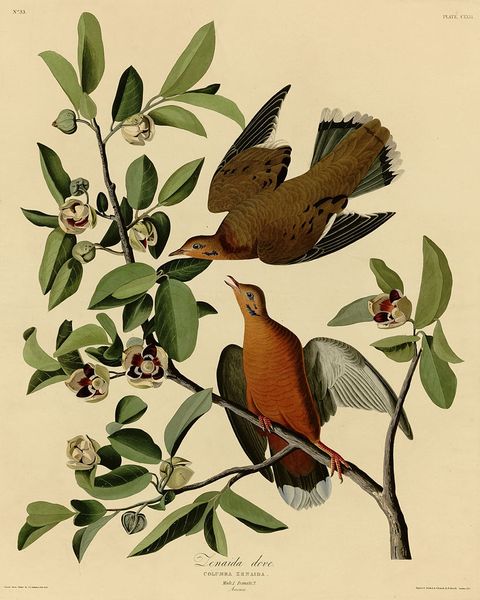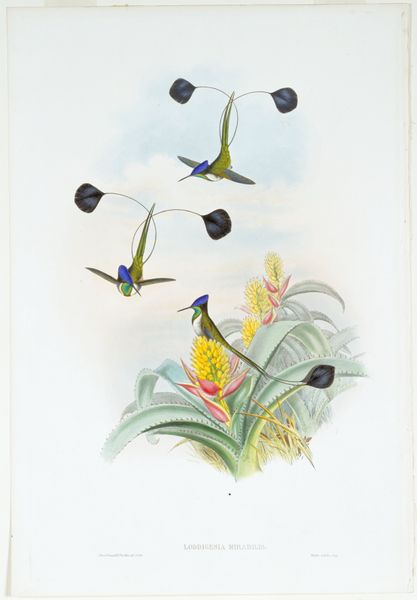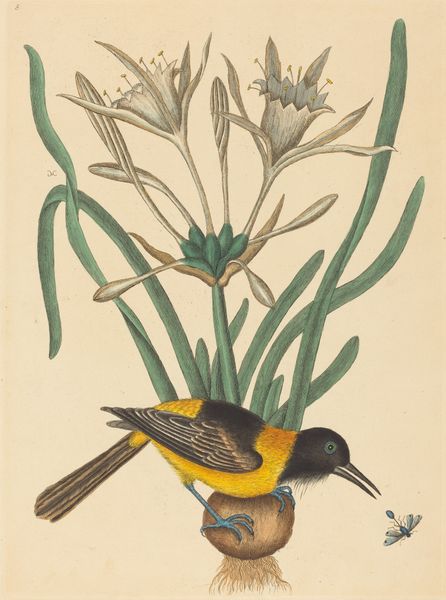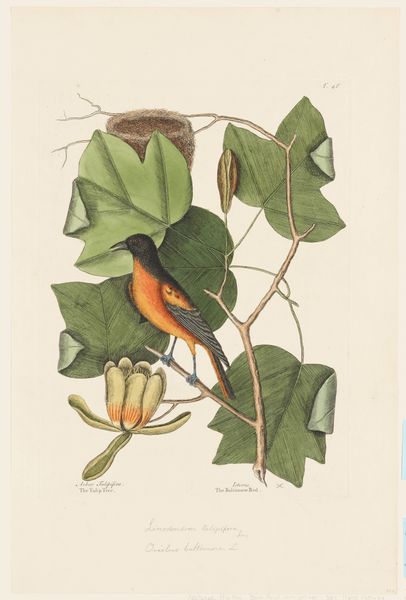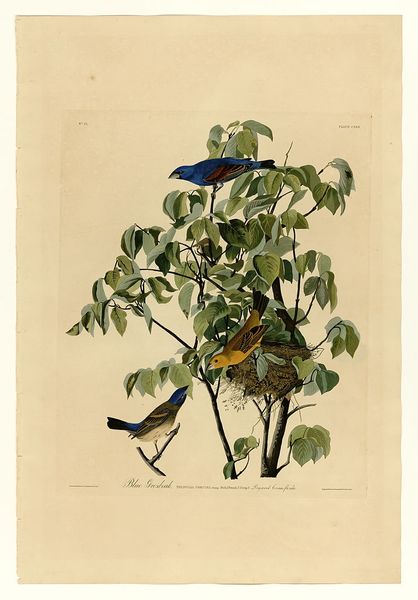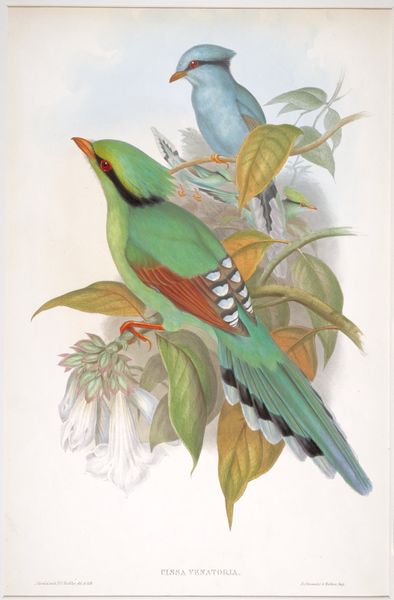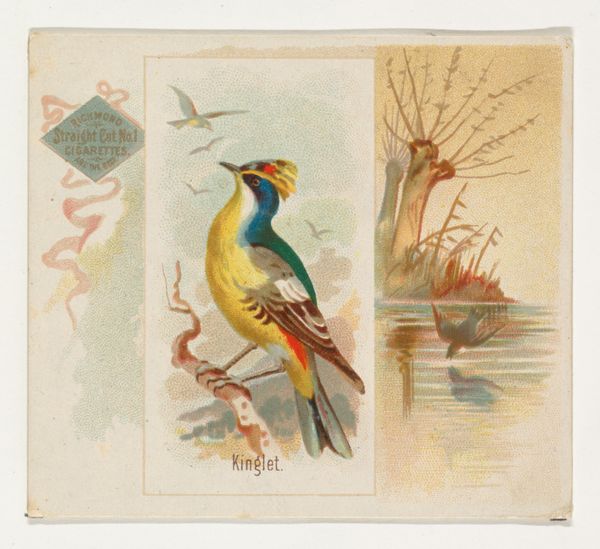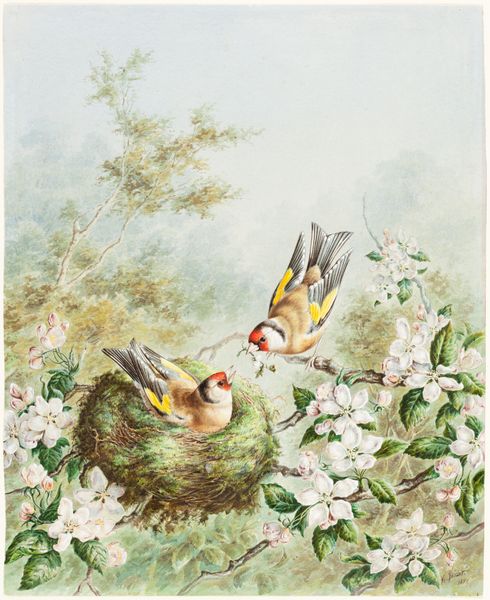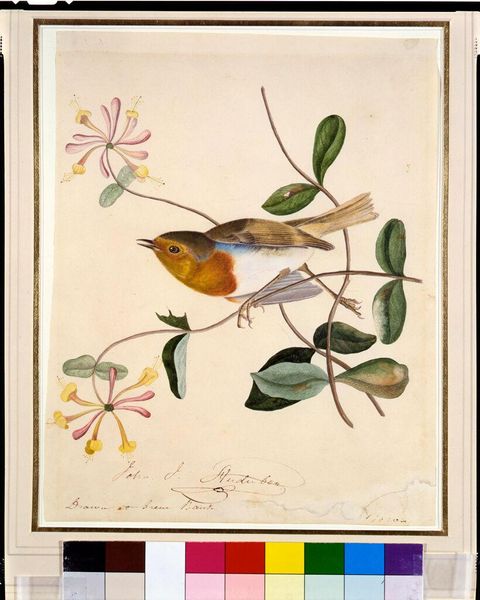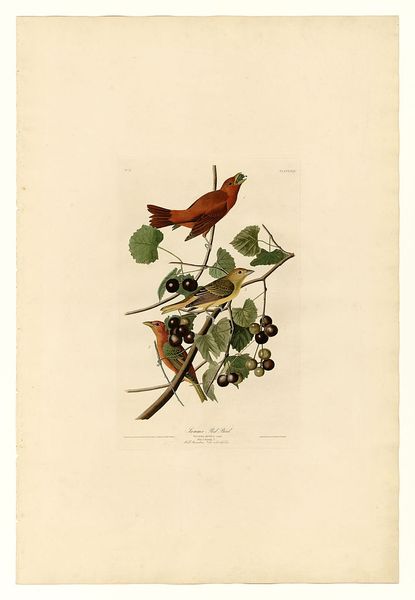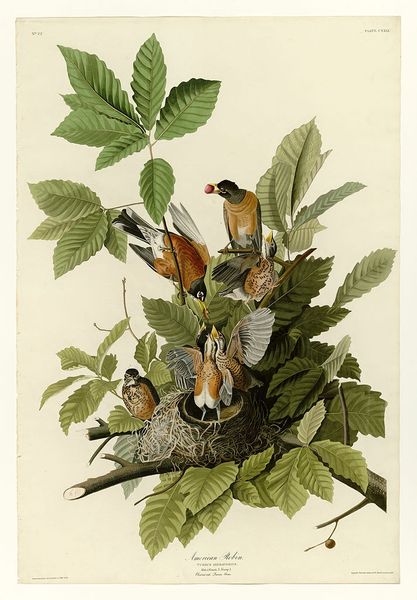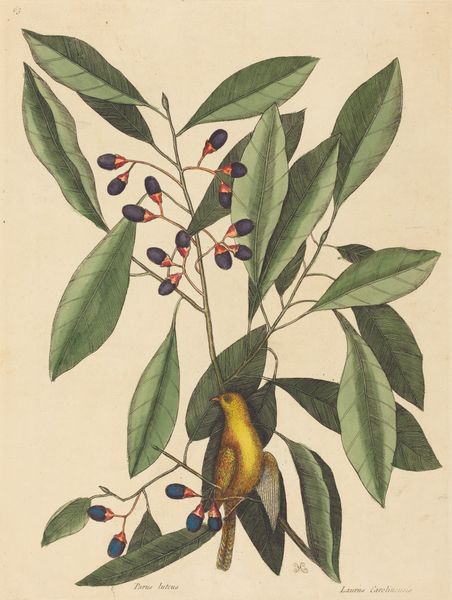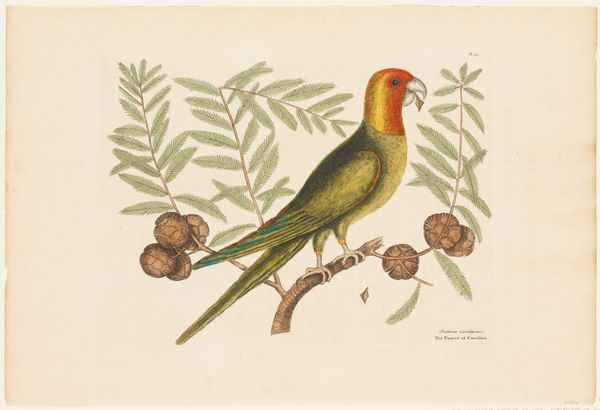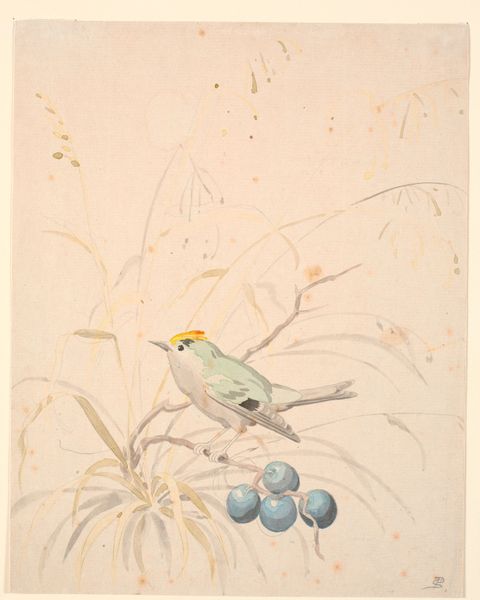
#
vegetal
#
naturalistic theme
# print
#
botanical illustration
#
fluid art
#
food illustration
#
england
#
botanical photography
#
botanical drawing
#
watercolour illustration
#
botanical art
#
watercolor
Dimensions: 20 x 14 in. (50.8 x 35.56 cm) (sheet)
Copyright: Public Domain
Editor: Here we have John Gould's "Plate 45," a print created sometime between 1862 and 1873. There's something very domestic about it; a mother bird and her chicks nestled in their nest. What can you tell me about this piece? Curator: Gould’s ornithological illustrations, while seemingly objective, operate within a complex web of colonial science and 19th-century British identity. This wasn't just about documenting nature, but also about possessing it, classifying it, and framing it for a European audience. How might the idea of “framing” a species like this reflect broader imperial projects? Editor: So you're saying it's less about pure scientific observation and more about control and ownership? I see what you mean. The way the birds are positioned so neatly, almost staged, adds to that idea. Curator: Exactly. The detail and beauty are undeniable, but consider the context. Scientific illustrations, particularly those depicting fauna from colonized lands, often served to reinforce a sense of Western dominance and a narrative of taming the 'wild.' Where do you see power dynamics reflected in this specific composition? Editor: Well, the adult birds seem protective, almost possessive, over their young. Is there a connection between this familial imagery and ideas of national identity or the preservation of British "stock" at the time? Curator: Precisely! Think about the prevailing social Darwinist ideologies and the anxieties around preserving racial and cultural purity during the Victorian era. Gould’s seemingly innocent portrayal of a bird family subtly echoes those concerns. What do you make of the detail given to the nest itself? Editor: The nest is so carefully rendered, as are the surrounding branches and pinecones. It gives the image an almost claustrophobic feel, like this little family is isolated from the rest of the world. It's interesting to consider these elements as both scientific observation and symbolic representation. Thanks, that was fascinating. Curator: Indeed. Gould’s print offers a rich lens through which to explore the intersection of art, science, and colonial power.
Comments
No comments
Be the first to comment and join the conversation on the ultimate creative platform.
